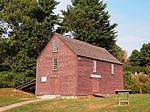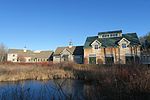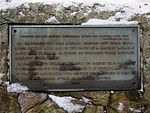Isabella Breckinridge House
The Isabella Breckinridge House also known as River House, and formerly the Breckinridge Public Affairs Center of Bowdoin College, is a historic house at 201 US Route 1 in York, Maine, United States. The main house, designed by architect Guy Lowell, is a 23-room mansion which was built in 1905 for Mary Goodrich, widow of tire magnate B. F. Goodrich. It is located on a 26-acre (11 ha) estate facing the York River. The property was given to Bowdoin College by Mary Marvin Breckinridge Patterson in 1974, and the college operated it as a conference center until it was sold into private hands in 2004. The house was added to the National Register of Historic Places in 1983. It is one of Maine's most architecturally distinctive and unusual early 20th-century summer estate houses.
Excerpt from the Wikipedia article Isabella Breckinridge House (License: CC BY-SA 3.0, Authors).Isabella Breckinridge House
US Route 1,
Geographical coordinates (GPS) Address Nearby Places Show on map
Geographical coordinates (GPS)
| Latitude | Longitude |
|---|---|
| N 43.140833333333 ° | E -70.688333333333 ° |
Address
US Route 1 201
03909
Maine, United States
Open on Google Maps










